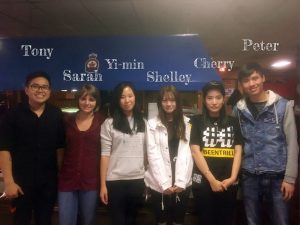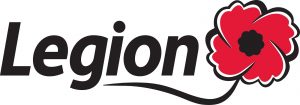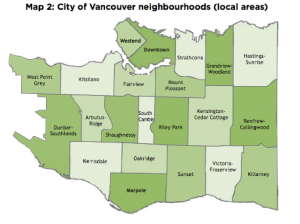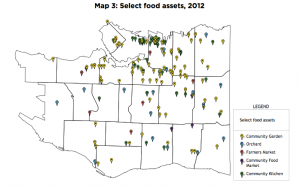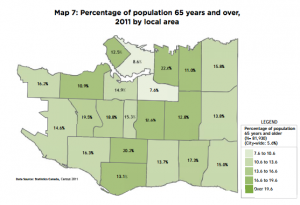Project Proposal + Progress
- Post a PDF of your project proposal
- Articulate your Weekly Objectives and Achievements
- Using the What, So What, Now What framework, reflect on a moment of significance that has occurred in the course so far.
- Identify upcoming objectives and strategies to achieve them.
Weekly Objects: 8 Weeks
Week 1: October 10-15
– create an assessment outline and interview questions
– Contact legion
Week 2: October 17-22
- review project progress
Week 3 October 24-29
- visit Vancouver Royal Legion Branch 44
- record any kitchen infrastructures they may have
- interview the manager with the questionnaire we have prepared
Week 4 October 31 – November 5
- review project progression
- discuss project key findings
- work on and complete group blog posting #3
Week 5 November 7-12
- develop a infographic for the project
Week 6 November 14-19
- review project progression
- work on final report/presentation
Week 7 November 21-26
- complete group blog posting #4
- complete project infographic and ppt slides for the final presentation
- begin practicing for the final presentation
- work on final project report ( at the time, the report should be about finished)
Week 8 November 28 – December 3
- complete and submit final project report
2. In terms of achieving this week’s objectives, we submitted our Project Proposal. We have also created a draft of potential interview questions that we ideally would like to ask when we meet with our Community Partner. In terms of achievements this week, our group member, Sarah, has successfully contacted our Legion branch and have made an appointment for our group to visit on October 26 – we believe that we are making good progress towards building a lasting relationship with our Community Partner. As mentioned in our first blog post, our Legion does not have a kitchen nor bar; despite the absence of a kitchen, we believe that this may give us a better opportunity to think outside-of-the-box in terms of identifying assets outside of kitchen infrastructure. Our intended objectives of our upcoming weeks are to be tentative, as the inner workings of our Legion is still unclear to us, and we hope that objectives that are specifically tailored to our community partner will better serve the purpose of our research.
3. We used (Rolfe et al.’s, 2011) reflective model where it is based upon 3 questions What? So what? Now what? to describe a moment of significance in this course so far for us. This model helped us reflect on our observations (What?), and how that resulted in our actions (So What?) and how we should move on from this situation (Now What?).
Over the week, members of our group worked together to develop an outline of what we should discuss Legion over the phone in order for us to determine if we could meet with them. We were able to contact the Legion, however the person who spoke with us on the phone, the Secretary, did not think the Legion would be of any interest to us since it is a “dry” Legion that does not have a kitchen or a bar. She wanted to help us by redirecting our project to a location that has more to offer to the public. However, she mentioned that the Legion at this location has an annual Rememberance Day Event that fundraises money for the community. This information allowed us to reassure her that our group was still interested in learning more about this particular Legion. Without this information, it would have been difficult for us to let them know why we were interested in their Legion for our project since it is not open to the public.
Letting the Secretary know why we are interested in the Legion for the project, despite the fact that it is a “dry” Legion, was a very important step. The Secretary is the person who will pass our information on to the Director of the Legion, therefore we needed to convince her that we were interested in their Legion more than the other ones. When the Secretary understood our interest in their particular Legion, she was very amiable in helping us set up a meeting with the Director of the Legion.This taught us the importance of not giving up right away, when we we could have when the Secretary told us that the Legion was not a good option for us and didn’t understand why we would be interested. We were reminded about what Mathie mentioned in their paper about assest based community development (ABCD) that there are no clear guidelines to ABCD but one of the more important points is to “collect stories of community successes of the past and analyse the reasons for success” (Mathie & Cunningham, 2003). This helped us focus on the Legon’s highlights by asking questions about what the Legion offers to their members, giving us a window of oppritunity to express our interest in a way that is understandable to the Secretary.
Now that we have successfully completely the phone call, we have the possibility of meeting with the Director because the Secretary will tell her about our group and the day and time that we are interested to meet. We may encounter more obstacles before we are able to have our first meeting, however we will now be more prepared to handle these situations because of our experience over the phone with the Secretary. If the Director of the Legion is hesitant to meet with us, we can try our best to explain to her why we are interested in their particular Legion and how it connects to our projectIn the Podcast, the author talks about stigmatism in failure and how we should not be afraid to quit. Quitting does not mean giving up but realising a method does not work anymore and changing to a new one immediately. Similarly, we will continue to insipire confidence in our Legion to gain the trust we need to work together. We will also have more confidence approaching new situations knowing that we were able to work through the first one and have a positive outcome. We are not afraid to fail as similar to what McDonald’s story conveyed, failure can be a learning curve because without failure, we would have the arrongance we shouldn’t have (“Failure Is Your Friend: A New Freakonomics Radio Podcast – Freakonomics”, 2014). We will “fail quickly so that we have more chances of failing until we find a way” to enhance the Legion’s assests for community based development in the area (“Failure Is Your Friend: A New Freakonomics Radio Podcast – Freakonomics”, 2014). McDonald talks about how NASA was too proud to postpone the date again for their take off as they have come a long way in space travel, even though the engineers advised against it, they still launched the rocket and it failed, causing their first fatal casualty (“Failure Is Your Friend: A New Freakonomics Radio Podcast – Freakonomics”, 2014). From this story, we were able to learn the importance of change and patience in order to have the best outcome from this project.
4. Our next objective will be to finalize the consent forms, and our interview questions. It is imperative that we recieve a response from the secretary of Legion 44, and also reply in a timely manner. Interview questions would be used as a tool to collect useful information regarding physical food or social capital that may be used in Asset Based Community Development. As a group we have agreed, that aproaching this project in the most ethical way is of the utmost importance due to the sensitive nature of our Community Partner’s services, we hope to achieve this by consulting with Legion staff on the nature of our survey questions to members, and having informed consent given, by clearly stating what the information is used for, and strict anonimty and confidentiality will be kept following what we have all learned from the TCPS CORE Module. Although we are aware that our specific Legion does not contain a kitchen, we hope that proper analysis of their enviroment may yield insight into any possible assets that the Legion may utilitize better towards community development, whether it would be in the indirect form of ‘food assets’ as outlined in the Vancouver Food Strategy (2013) via ‘social capital’ through member/community and relationships (Mathie, 2013). For example: (1) Emphasize collaboration and partnerships, (2) Creating neighbourhood based venues … to enable community articipation in food system activities. (Vancouver Food Strategy 2013) As any future community development needs to happen collaboratively with all levels of stakeholders within the area serviced.
.
References:
Freakonomics. Retrieved 14 October 2016, from http://freakonomics.com/podcast/failure-is-your-friend-a-new-freakonomics-radio-podcast/
Mathie, A., & Cunningham, G. (2003). From clients to citizens: Asset-based Community Development as a strategy for community-driven development. Development in Practice, 13(5), 474–486.
